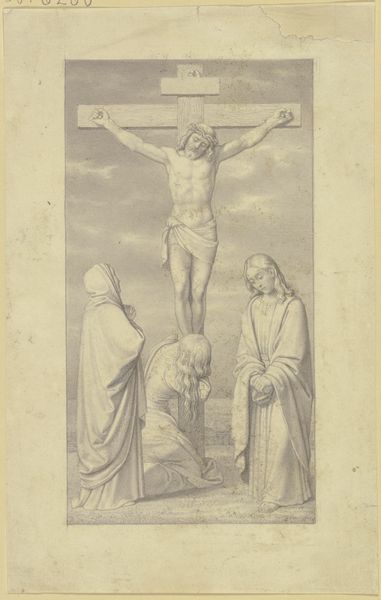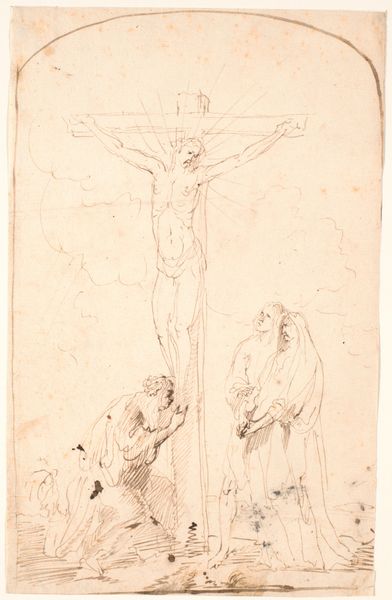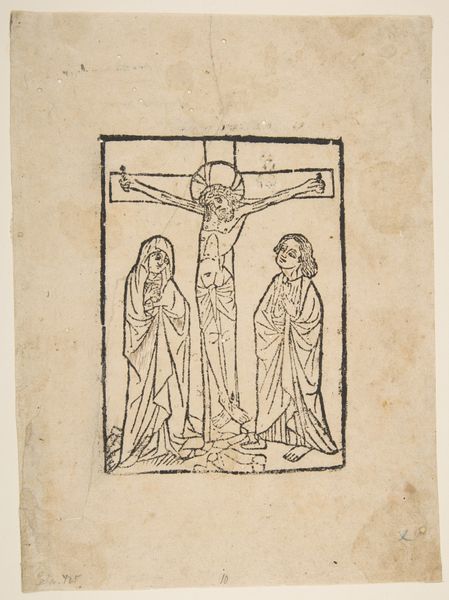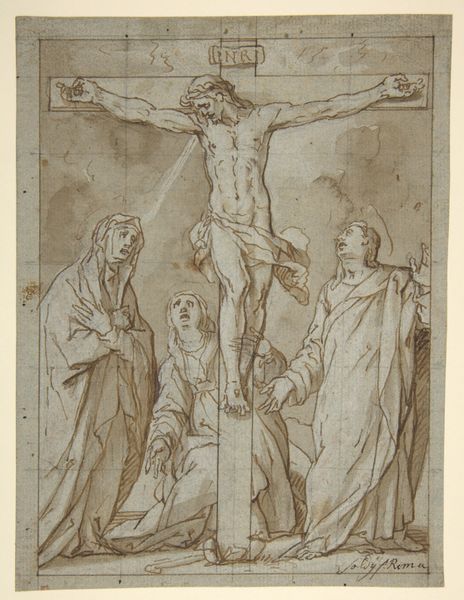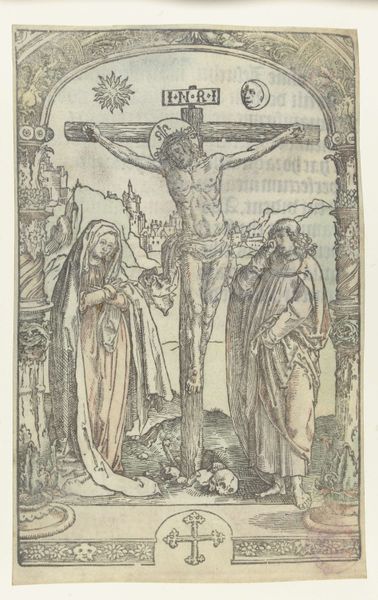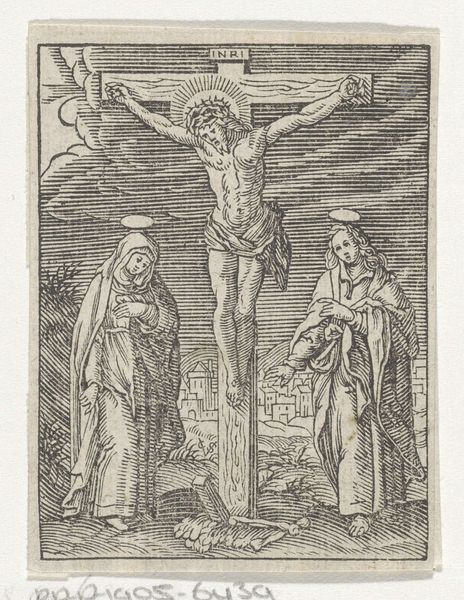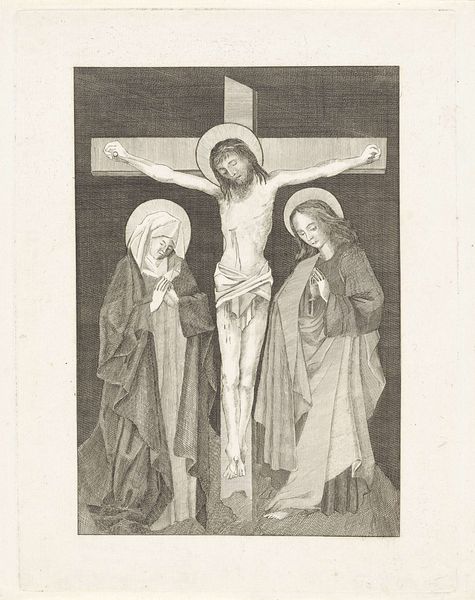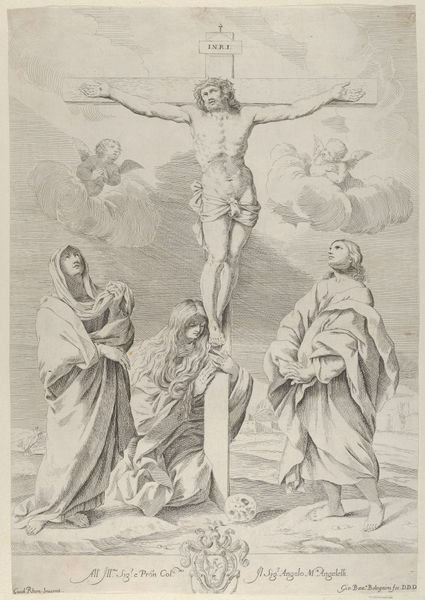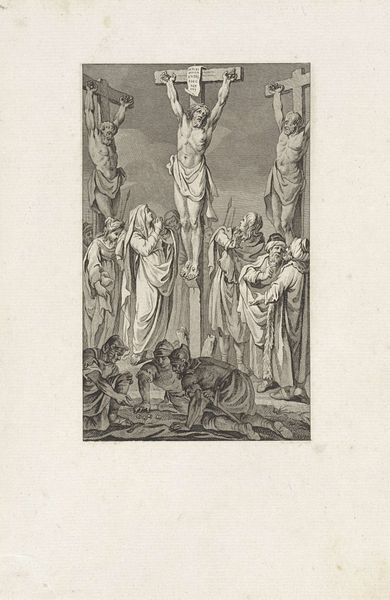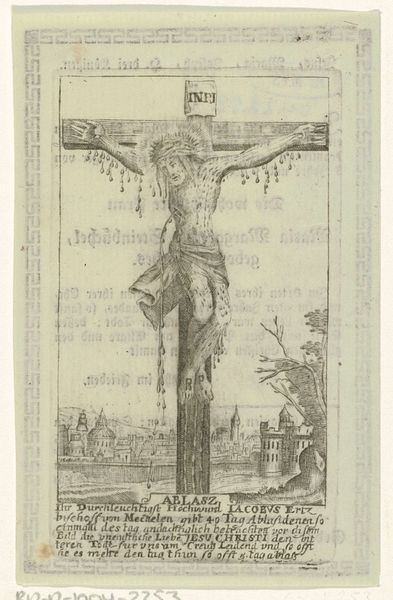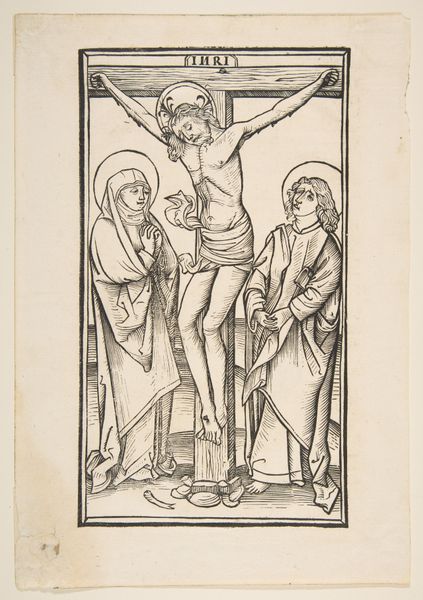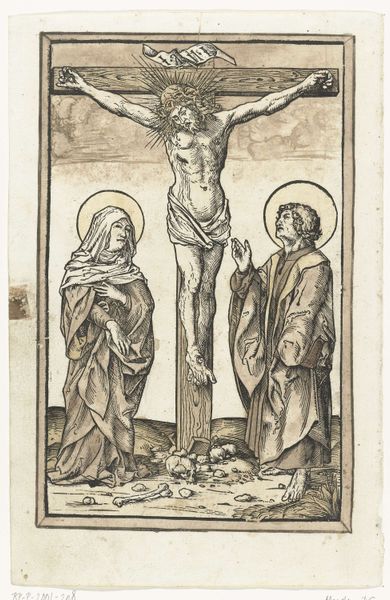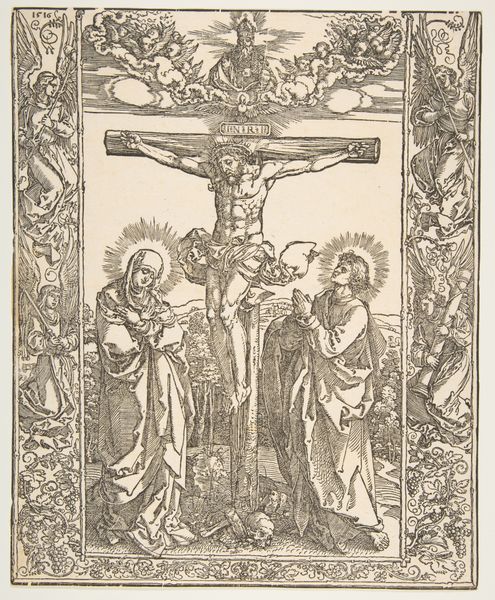
Christus aan het kruis tussen Johannes en Maria 1821 - 1879
0:00
0:00
drawing, paper, pencil
#
drawing
#
pencil sketch
#
landscape
#
figuration
#
paper
#
pencil
#
line
#
history-painting
Dimensions: height 267 mm, width 217 mm
Copyright: Rijks Museum: Open Domain
Editor: So, this is "Christ on the Cross between John and Mary," a pencil and paper drawing made sometime between 1821 and 1879 by jonkheer Isaac Lambertus Cremer van den Berch van Heemstede. It’s a striking image, stark, almost unfinished. The lines are so delicate, but the subject is so monumental. What stands out to you in this piece? Curator: It’s fascinating how the artist chooses pencil, such a readily available and accessible material, to depict such a loaded scene. Consider the socio-economic implications. Was this accessibility a conscious choice? Perhaps reflecting a specific devotional practice aimed at a broader audience beyond the traditionally wealthy patrons of grand religious art? Editor: That's an interesting point! I hadn't considered the social aspect of the material itself. Curator: And look at the paper. What kind of paper is it? Is it mass-produced, or something more bespoke? The very act of sketching, rather than painting, invites a different kind of labor and perhaps a quicker consumption cycle. Are we looking at a study, a preparatory work meant for a different end, or is it the finished piece? Editor: I'm not sure about the paper type. If it was meant to be something "quick" would that suggest that it was for mass consumption and, if so, why? Curator: Possibly not for mass *consumption*, but certainly hints to something more immediate and less mediated; pencil enables quick correction. Look too, at the implied narrative around the cross and skull, the setting and implied consumer. How are the materials helping communicate and convey the emotion versus monumental paintings during this time? Editor: So, by focusing on the materials, we can see how the artist's choices reflect a particular approach to the subject matter and potentially offer commentary on society, labour, and artistic consumption itself? Curator: Precisely. It moves beyond mere aesthetic appreciation and into understanding the artwork as a product of its time and its maker's relationship with the means of production. Editor: I’ve learned so much! I'll never look at a simple pencil drawing the same way again. Curator: Exactly! Seeing the art and labor helps reframe the importance of it as a reflection of social dynamics.
Comments
No comments
Be the first to comment and join the conversation on the ultimate creative platform.
